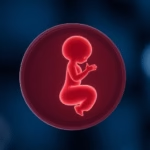Pants Getting Tight During Pregnancy
Today we will be talking about when pants start getting tight in pregnancy.
Pregnancy is a beautiful phase in a woman’s life, marked by numerous physical changes as the body adapts to nurture a growing baby. One of the most noticeable changes is often the increasing tightness of pants and other clothing. This change happens due to several factors, including hormonal shifts, weight gain, and the expanding abdomen. Understanding when and why this occurs can help expectant mothers prepare for their journey. It’s essential for every woman to embrace her body during this period, recognizing that these changes are entirely normal and signify a healthy pregnancy. From the early weeks to the later stages, women’s bodies adapt to meet the needs of the developing fetus. Understanding these changes will not only aid in wardrobe planning but also enhance mental preparedness for this unique experience.
1. Understanding Pregnancy and Body Changes
During pregnancy, the female body goes through a series of changes, primarily aimed at accommodating the developing fetus. These changes result from hormonal interactions, increased blood volume, and the growth of the uterus. Most women will experience physical symptoms such as morning sickness, fatigue, and more. One major focus is the abdominal area; as the pregnancy progresses, women may notice their pants getting tight, often quite early into the first trimester, depending on their body type and existing weight. The hormonal surge impacts ligament elasticity, causing expansion in areas such as the hips and abdomen. Awareness of these changes helps in understanding and anticipating wardrobe adjustments that will ultimately lead to comfort during the pregnancy journey.
2. When Do Pants Start Getting Tight?
For most women, pants start feeling tight around the end of the first trimester, specifically between weeks 12 to 16. However, this can vary significantly based on individual body types, previous weight, and water retention characteristics. Some women might find their favorite jeans feeling snug even earlier, as hormonal changes can lead to bloating and abdominal sensitivity. As the pregnancy progresses, the uterus expands, putting additional pressure on the pelvic region and making tightly fitted pants uncomfortable. Recognizing these signs early is essential to ensure comfort and style without compromising on one’s body image or experience during pregnancy.
3. The Role of Hormones in Pregnancy
Hormones play a crucial role in causing the changes that lead to tight pants during pregnancy. Increased production of hormones like progesterone and estrogen prepares the body for pregnancy, resulting in various physical alterations. Progesterone can cause a relaxing effect on the ligaments and muscles, which in turn can lead to some abdominal bloating that affects the fit of clothing. Oftentimes, pregnant women experience significant changes in their weight distribution due to fluid retention and increased appetite. These hormonal shifts mean that it’s common to feel uncomfortable in clothes that previously fit well. Acknowledging hormonal changes and their impact on body changes is essential in navigating wardrobe needs during pregnancy.
4. Weight Gain During Pregnancy
Weight gain is another norm in pregnancy, with averages recommended between 25-35 pounds for women with a normal pre-pregnancy weight. This gradual increase can lead to tighter pants and influence how one feels about their body image. It’s important to note that weight gain can vary based on multiple factors, including the woman’s height, pre-pregnancy weight, and whether she is having multiples. To manage discomfort, investing in maternity wear or pants that accommodate a growing belly can ensure comfort while also evoking a positive body image. Understanding that weight gain is a natural and necessary process can help women embrace the changes that occur throughout their pregnancy.
5. Choosing Comfortable Clothing
When faced with tighter pants during pregnancy, prioritizing comfortable clothing is vital. Maternity clothing options are designed to cater to this specific period, providing style without sacrificing comfort. Look for pants made from stretchy fabrics that can adapt to body changes while ensuring adequate support. While many women may hesitate to invest in maternity clothes, prioritizing comfort can vastly improve the pregnancy experience. Additionally, choosing versatile clothing options that will last throughout different stages of pregnancy can be economical and practical. There’s a myriad of stylish yet comfortable options available, from leggings to adjustable waistbands, allowing women to feel good regardless of any shape shifts.
6. Body Positivity and Self-Love
Embarking on the pregnancy journey comes with an emotional experience, including fluctuating body image perceptions. As pants become tight and bodies change, it’s essential to practice body positivity and self-love. Wearing clothing that flatters and suits evolving shapes can be uplifting. Surrounding oneself with supportive people, sharing experiences with other pregnant women, and focusing on the miracle of life can enhance the journey significantly. Emphasizing self-care, both mentally and physically, lays the groundwork for a healthy pregnancy. Remembering that each pregnancy is a unique story helps maintain a positive mindset and can make the inevitable body changes feel a bit easier to manage.
7. Supportive Undergarments
Finding the right support is key to navigating tight pants during pregnancy. Maternity undergarments can offer essential support to accommodate body changes, with items like pregnancy bras and support bands designed to relieve discomfort around the belly. Investing in well-made supportive underwear can lead to improved comfort, making the transition smoother as body dimensions change. Additionally, wearing supportive undergarments can enhance body confidence while providing necessary relief from growing pains or lowering back pressure throughout this phase.
8. Recognizing Signs of Discomfort
Occasionally, it’s important for women to recognize the signs when clothing may be too tight. Physical discomfort, restricted blood flow, and skin irritation can all be signs to adjust one’s attire. Paying attention to these signals is vital for the overall well-being of mother and child. If pants consistently dig into the stomach or lead to significant discomfort, it’s time to rethink wardrobe choices. Opting for looser fitting clothing, especially in later trimesters, can help enhance overall comfort and promote a more enjoyable pregnancy journey.
9. Maternity Fashion Trends
Maternity fashion has evolved significantly, providing a host of stylish options for expectant mothers. Today, women no longer have to compromise on style for comfort. Designers are increasingly creating trendy maternity wear that accommodates a growing body while ensuring women feel confident. From stylish maxi dresses to chic jumpsuits and fashionable activewear, there’s something for everyone. Staying updated with current fashion trends can make dressing during pregnancy enjoyable rather than a chore, providing a wardrobe that fulfills comfort while maintaining a sense of style.
10. Transitioning Post-Pregnancy
Post-pregnancy, many women find themselves navigating a new body shape and size. Understanding what is normal post-birth can help ease transitions and expectations. Pants that seemed tight during pregnancy can sometimes feel loose once the baby arrives. However, it’s essential to allow the body time to heal and transform naturally after childbirth. Seeking clothes that offer comfort and support during this phase is significant. Additionally, many women wish to embrace their post-baby bodies; fostering a mindset of self-love and acceptance is vital for a smoother transition back to pre-pregnancy clothing.
Conclusion
As we reflect on the journey of pants becoming tight during pregnancy, it becomes clear that this experience is both normal and multifaceted. Women’s bodies adapt in tremendously beautiful ways to ensure the health of both mother and baby. It’s crucial to recognize that changes are inevitable and should be embraced rather than resisted. The role of hormones, weight gain, and the search for comfortable clothing all play significant roles throughout the pregnancy experience. Fostering body positivity during this time is fundamental, allowing mothers to celebrate their unique shapes. Maternity fashion continues to advance, providing stylish and trendy options that keep comfort a top priority. Moreover, paying attention to the body’s signals and recognizing when to opt for more accommodating clothing can enhance comfort throughout these transformative months. Understanding the transitions that occur during and after pregnancy equips women with the knowledge needed to navigate the changes gracefully. Finally, embracing maternity wear and being kind to ourselves as we undergo this phase leads to a more joyful and fulfilling pregnancy journey.
Frequently Asked Questions
1. When will I need maternity pants?
Most women begin needing maternity pants between 12 to 20 weeks into their pregnancy, depending on individual body types and size.
2. How can I comfort my tight clothing?
Consider investing in maternity clothes designed for comfort, or select looser fitting attire to accommodate body changes.
3. Is it normal to feel uncomfortable in my clothes during pregnancy?
Yes, it’s common for clothing to feel tight various stages of pregnancy due to hormonal changes and weight gain.
4. Can I still wear my regular clothes during pregnancy?
It’s possible in early pregnancy, but as you progress, you may find conventional clothing uncomfortable and opt for maternity wear.
5. Do I need to buy new clothes after giving birth?
Post-pregnancy, it’s advisable to invest in flexible clothing that accommodates body changes, allowing comfort during recovery.
Further Reading
3.5 tog sleeping bag temperature guide
What Type of Psychotherapy Is Best for Anxiety?







